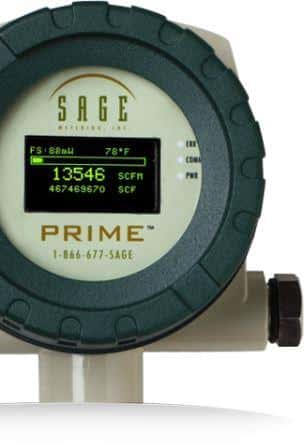Sage thermal flow meters play an important role in trading carbon credits, from waste-to-energy projects to methane destruction and carbon credit verification.

What is Carbon Credit?
One carbon credit represents the right to emit one ton of carbon dioxide or one ton of a greenhouse gas, which has a carbon dioxide equivalent (CO2e). For more information on greenhouse gases, see Sage Metering’s white paper “Greenhouse Gas Emissions Monitoring Using Thermal Mass Flow Meters.”
Waste-to-Energy Projects
Carbon credits are generated by various methods, including converting biogas (or biomass) to renewable energy in a waste-to-energy project. Biogas is formed through the decomposition of organic material in an anaerobic digestion process. It is a combination of methane and carbon dioxide—typically 65% methane and 35% carbon dioxide—and can be used as fuel for an engine or boilers.
Methane Destruction
Each greenhouse gas has a different capacity to heat the atmosphere. Methane has a capacity of 21, meaning that each ton of methane has a warming potential equivalent to 21 tons of CO2 (referred to as equivalent CO2). Thus, carbon credits can be generated through methane destruction. When using biogas as a fuel, renewable energy is created, and carbon credits are generated through methane destruction.
Carbon Credit Verification
Sage Mass Flow Meters are frequently used to measure and totalize biogas flow. The flow meter is essential to the carbon credit verification process. It is the “cash register” for determining how much methane is destroyed. The flowmeter also provides information that the digestion and destruction equipment is operating correctly.
Carbon Credit Protocols Require On-Site Calibration
When using a flow meter for carbon credits, one important consideration is that various protocols require quarterly calibration inspection. A key advantage of Sage Prime is its ability to perform an on-site calibration verification. This procedure can be accomplished quickly and easily without removing the sensor from the pipe or requiring additional equipment. This test matches in-process data with original calibration data, which verifies that the electronics and sensor are operational and the meter is calibrated. The calibration verification systems of other thermal flow meter manufacturers test only the electronics, or they require additional hardware or require removing the sensor from the process.
The Camco In-Situ Application case study provides more information on using Sage in-situ calibration in carbon credit projects.

